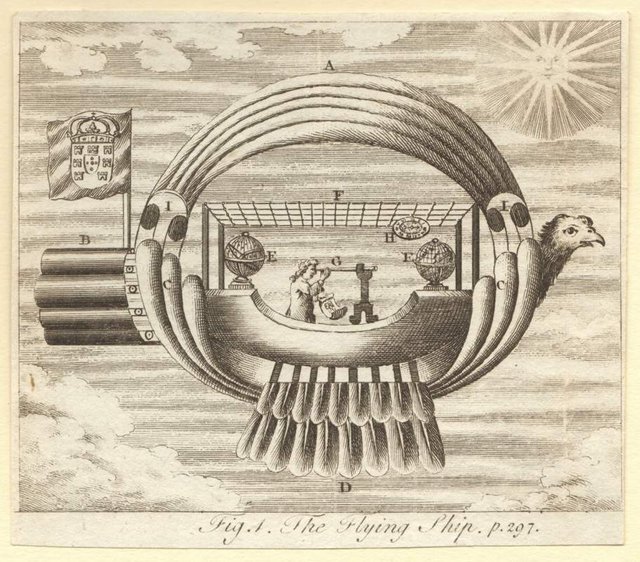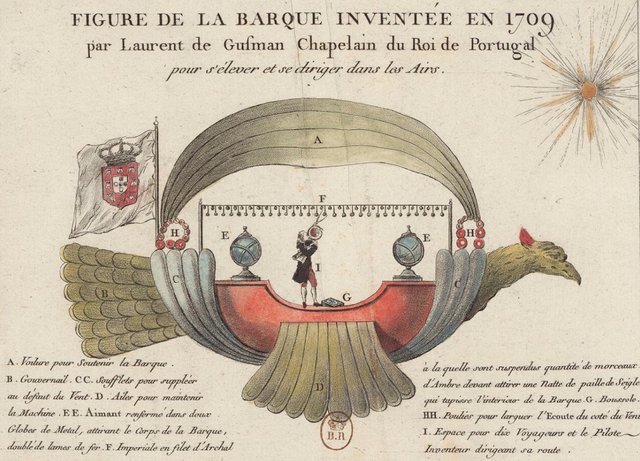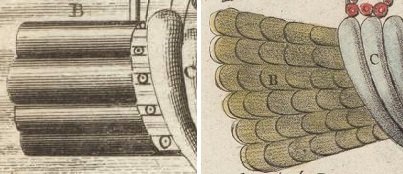Quote: Uncolored etching of "The Flying Ship" proposed by the Jesuit Bartolomeu de Gusmão (1685-1724). On August 8, 1709, Gusmão is said to have flown a small balloon before the court in the Casa da Índia in Lisbon. The image in question may be a representation of a heavier-than-air machine proposed by Gusmão, or more likely, a representation of a proposed large balloon drawn by someone unfamiliar with the actual appearance of Gusmão's design. The craft is shown aloft with clouds and sun in the background. It features a bird-like shape and decorations. The operator sits in the open body of the bird with a telescope and globes. Oars are provided for propulsion. Parts are marked with letters A-I, but no key is present.

I probably would not be posting the above drawing was it not for the altered drawing below.

As you can see, the tail ends do not really match.

Sources:
- Bartolomeu de Gusmão - Wikipedia
- Fig. A. The Flying Ship. p. 297.
- Bartolomeu de Gusmão and the first Aircraft
- Launching the Balloon Era
KD:Basically, wanted to see what the opinions on this change of the rear portion of the aircraft was, in addition to:
- Why would somebody replace possible nozzles (KD) with feathers?
- What do you think we have displayed in the rear of the top image?
To be honest, I have hard time imagining why we even have this nozzle resemblance in the beginning of the 18th century.
Additionally, if we could locate the original legend for the top image, that would be great.
SH Article with comments: 1709: a Jesuit Flying Ship by Bartolomeu de Gusmão